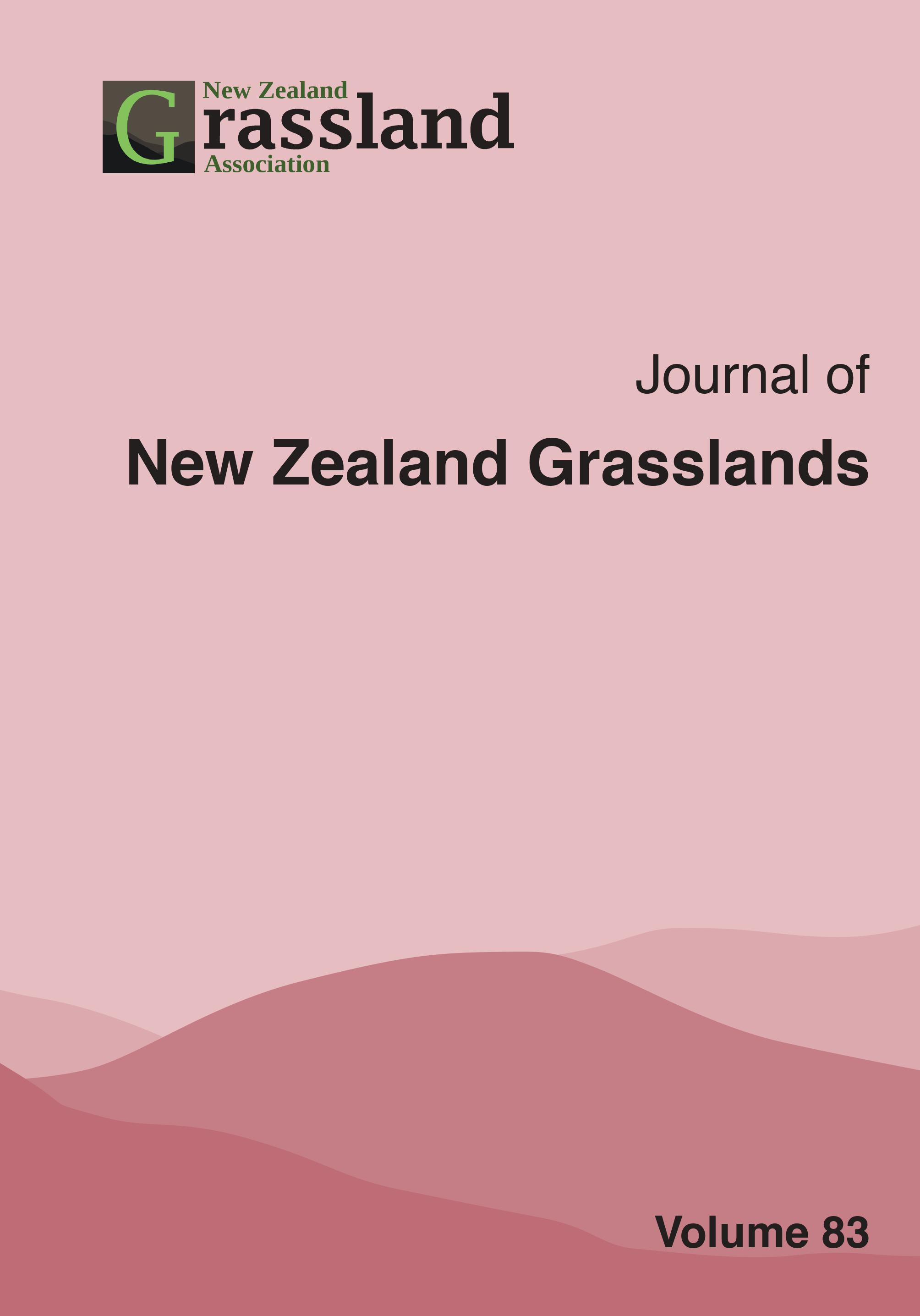A summary of research results on pasture responses to fertiliser and lime in the South Island hill and high country
DOI:
https://doi.org/10.33584/jnzg.2021.83.3492Abstract
The published results from trials used to determine nutrient and lime requirements of legume-based pastures in South Island hill and high country are summarised. Most of the research in the 1950’s and 1960’s found that sulphur (S) alone was required on the less weathered and leached Semi-arid and Pallic soils but both S and phosphorus (P) were required on the more weathered and leached Brown soils. The severe lack of S necessitated the application of rapidly plant-available S as gypsum. Research in the 1970’s and 1980’s determined the most effective particle size ranges in relation to frequency of application of elemental S to provide adequate S. This work highlighted a need for sufficient S for legume growth before a growth response to P was measured on most soils which has resulted in the manufacture of a range of suitable sulphur fortified superphosphate products. During this 40-year period a limited amount of work showed that nitrogen (N) fertiliser could enhance the growth of resident grasses and legumes and that added S could improve the response. Molybdenum (Mo) has been the only trace element that has been lacking for pasture growth and research has been reported that defines optimal rates, frequency of application and criteria for interpretation. In the last 20 years, the need lime to alleviate soil aluminium (Al) toxicity on these mainly acidic soils has been demonstrated to allow legumes to establish and persist.
Current gaps in available information indicate potential areas for more research. These gaps include identifying responses to rates of P and S on pasture with varying legume content on different hill slopes, differential application of elemental sulphur and lime on shady aspects of Semi-Arid and Pallic soils, definition of P and S requirements of pure legume swards, the role of fertiliser N to improve legume establishment, fertiliser and management options to break down thatch at the soil surface and improve legume establishment, determination of the soil and landscape factors that affect the spatial variability of soil Al concentrations, further confirmation of the role of lime injection into soil layers with high soil Al toxicity, the assessment of test strips of applied Mo to assist in the identification of deficiencies in legumes and the combination of information into a decision support system to aid farmers in their selection of legume species and fertiliser and lime requirements for different areas of their farms.
Downloads
Downloads
Published
How to Cite
License

This work is licensed under a Creative Commons Attribution-ShareAlike 4.0 International License.
Copyright
This work is licensed under a Creative Commons Attribution-Non Commercial-NoDerivatives 4.0 International License. Rights granted to the New Zealand Grassland Association through this agreement are non-exclusive. You are free to publish the work(s) elsewhere and no ownership is assumed by the NZGA when storing or curating an electronic version of the work(s). The author(s) will receive no monetary return from the Association for the use of material contained in the manuscript. If I am one of several co-authors, I hereby confirm that I am authorized by my co-authors to grant this Licence as their agent on their behalf. For the avoidance of doubt, this includes the rights to supply the article in electronic and online forms and systems.




